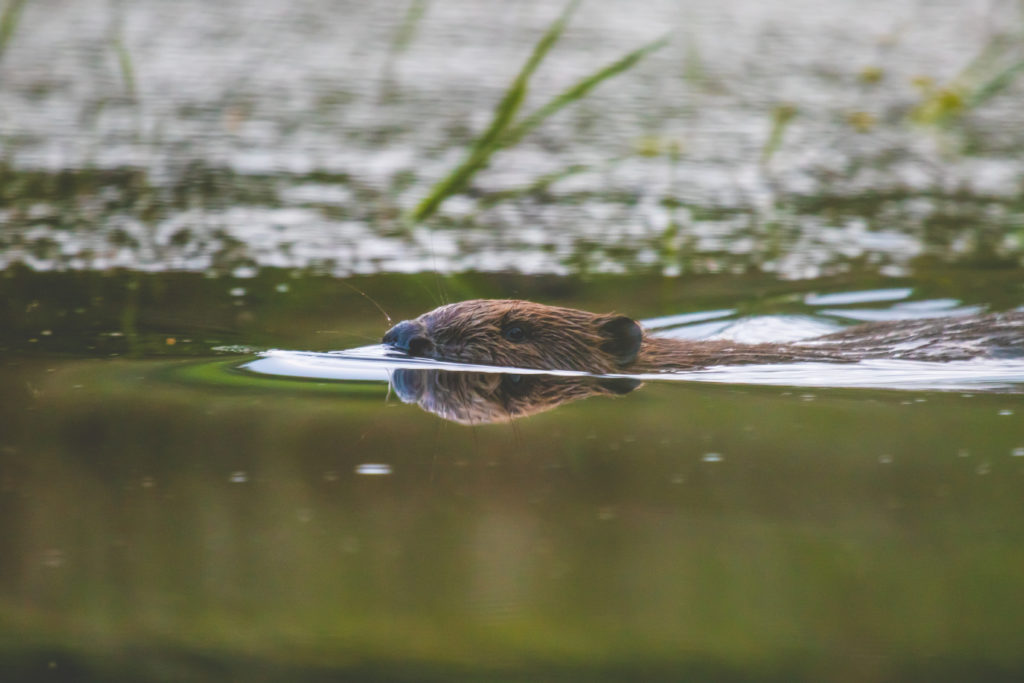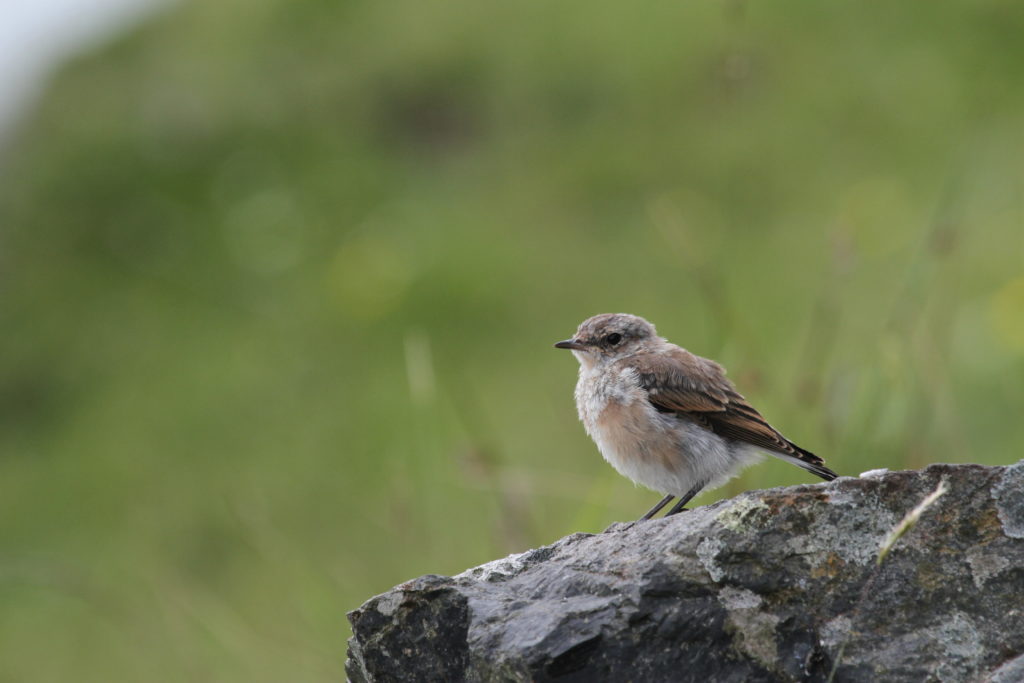RSPB Haweswater Site Manager, Lee Schofield, delves into the historic presence of a species which, until very recently, embodied British farmland. Discover how the return of traditional practices and nature-minded farming could be the key to the return of the Corncrake in Cumbria.
A blackbird-sized, secretive relative of the moorhen, the corncrake, as its name attests it is a bird with a close association with farming. Unless you’ve spent time in the extreme North-West of Scotland or Ireland, there’s a strong chance you’ll never have seen a corncrake in the British Isles, and perhaps you might never have even heard of one. But not so long ago their call would have been one of the defining sounds of summer.
In Reverend Macpherson’s 1892 Fauna of Lakeland, corncrakes were described as a common summer visitor across Cumbria, so common in fact, that they even occasionally nested in people’s gardens. There was no hint in the Reverend’s writing that their status might take a dramatic turn for the worse. To my grandfather, growing up on his family farm in Yorkshire in the early 20th century, the nocturnal, repetitive rasp of the corncrake between their arrival in April and when they departed again for African wintering grounds in September may have even kept him awake. Their rattling call sounds like a pencil being dragged across the teeth of a comb and gives them their Latin name Crex crex. Early in spring, Corncrakes make this call incessantly, up to a staggering 20,000 times per night.
By the time my grandfather met me, a century after Rev. Macpherson’s accounts, there would be no corncrakes left on the farm of his childhood. In the space of a few short decades, they went from being widespread and common across England to a scarce breeder on the brink of extinction.

Corncrake, Crex crex (Credit: RSPB)
“The demise of corncrakes is without doubt the result of changes to farming practices. But it’s not individual farmers that are to blame; it’s farming policy.”
The fate of corncrakes is tightly bound to that of their summer habitat. Prior to the widespread introduction of chemical fertilisers and the improvement in agricultural technology, the hay meadow would have been a crucial feature of every farm in Cumbria. With livestock often sent up to the fells for the summer months, fertile valley bottom meadows were shut-up from early spring to allow a hay crop to grow. The hay-cut, taken in late summer, provided livestock with the winter feed they needed to see them through to the next growing season. Repeated cropping on the same ground tended to lower the nutrient levels in the soil, which inadvertently benefited a huge range of wildflowers at the expense of the more nutrient hungry grasses. This most traditional of practices created one of the few man made habitats that is as rich as any natural or wild one.
These flowery meadows, undisturbed for several months, provided exactly the sort of cover that appealed to corncrakes for breeding, hiding the adults as well as their nests and chicks from predators. In a wilder, pre-agricultural landscape, corncrakes would have been found in natural floodplain meadows with tall vegetation. As humanity slowly removed these habitats, corncrakes adapted, becoming strongly associated with farmland, and with hay meadows in particular.
Their decline, like many of our farmland birds, came as a result of the post-war drive for food security. The so-called green revolution that took place between the 1950s and 1960s saw massive innovation in agricultural technology. The introduction of synthetic fertilisers and pesticides, along with an increase in the size and efficiency of tractors and other farm machinery resulted in a huge growth in yields. It also lead to the ripping out of thousands of miles of ancient hedgerows, the draining of wetlands, and the move away from diverse mixed farms to huge monocultures.
As well as hay meadows, corncrakes also rely on a degree of general untidiness. When they first arrive on their breeding ground in April, they need to find long vegetation in which to hide straight away, but typically hay meadows haven’t yet grown to a height to give them the cover they need. While they await the crop to grow, corncrakes make use of beds of nettles or irises, preferring the scruffy, wet and weedy parts of the landscape that have in so many places been swept away, drained and turned into something agriculturally more productive.

Swindale Valley hay meadow, RSPB Haweswater (Credit: RSPB/ Mike Harvey)
Let me be clear before I go any further: the demise of corncrakes is without doubt the result of changes to farming practices. But it’s not individual farmers that are to blame; it’s farming policy. This is an important distinction to make. Farmers have always done what society has asked of them. Up until very recently, that ask had been a simple one, to produce food, whatever the collateral damage. As we move into an epoch defined by the interwoven disasters of climate change and biodiversity loss, society’s ask needs to change. Farmers have the ability to supply a much a broader basket of goods involving more than just food. With the right support and incentives, farmers can add improved water quality, reduced flood risk, better storage of carbon in plants, trees and soils, access and recreation, health and wellbeing, abundant wildlife as well as healthy nutritious food to their list of outputs. Many already have. But we, a concerned society, need to make the ask more loudly, both through our buying choices (think local, environmentally sensitive farms) and in our demands to government.
As fertilisers and bigger, faster grass cutting machinery enabled the rapid conversion of wildlife rich hay meadows to be converted into monocultures of high-energy rye grass, traditional hay meadows leaked out of our landscapes; now over 97% of them are gone. These sanctuaries of colour, rich in nectar and insect life that were undisturbed oases for corncrakes to rear their chicks became sterile green deserts, through which tractors ripped two or three times a year. The corncrakes had no chance
They didn’t quite vanish altogether though. In the extreme North-West of Scotland and Ireland, where traditional farming practices are being kept alive, corncrakes cling on. There is also a small reintroduced population in the midlands, where the RSPB and others are working hard to return them to at least some of their former haunts.
Corncrakes produce prodigious quantities of eggs, and breeding them in captivity to produce the stock for reintroductions is now tried and tested. We have the knowhow to restore species rich hay meadows too. Visit Swindale Meadows here at RSPB Haweswater, or Cumbria Wildlife Trust’s Eycott Hill reserve in June and you’ll find swathes of richly flowering meadows that are the results of concerted restoration efforts. Many farmers are doing similar good work, supported by targeted government funding. To complete the scene, all that these meadows need now is the return of that distinctive nocturnal rasping that was their soundtrack until so recently. We have all the tools in the box to see corncrakes and flower rich meadows return to our farmed landscapes. If we add the will and the desire, I’m confident we could make it happen in Cumbria.
Find out more about Corncrakes here.


